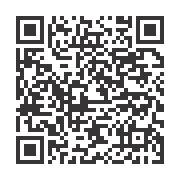Whether it’s massage or tummy time, always respond to your baby’s cues. If they are fussing or upset, try again another time. As the weeks go by, you’ll marvel at how much more they are able to do!


It may not always seem like it, but your baby is doing important work in the first weeks and months of their life. As they play and move, they learn about the world around them through their senses, and get stronger to be ready for crawling, walking and more! Massage, tummy time and reaching and grabbing games are three fun ways to bond with your baby while exercising their brain, muscles and nervous system.

Soothes and helps your baby sleep, and may help with constipation. Research suggests massage also supports a baby’s immune system. Adding a massage after a bath and before the last feeding can be the beginning of a comforting bedtime routine!
Towel, warm room and baby lotion or an oil that’s safe to eat (like safflower or sunflower oil). Test for irritation by putting the oil or lotion on a small section of your baby’s skin and waiting a day.
Find a warm, quiet room and talk to your baby in low soothing tones. Place your baby on your chest, bare skin to bare skin. Use gentle pressure to slowly stroke your baby’s back, but avoid massaging their neck. Gently rub and massage their feet and legs. If they don’t seem to like it, wait a few days and try again or start with a different area, like their arms. If you can, find a massage class with your baby or watch a few videos online from trusted sources (like WIC).
Develops strength and coordination of the neck and upper body. Gives your baby practice balancing and using their muscles.
Towel or mat and baby toys. Avoid thick bedding or blankets that can smother or cause suffocation.
Before about 4-9 months your baby may not be able to push up on their elbows or hold their head up, so it can be helpful to ease them into tummy time. Any time they are working on holding their head or upper body up, that achieves the goals of tummy time. It begins when you burp them with their head on your shoulder and they begin to control their head and look around.

Next, putting your baby tummy down on your chest or tummy or carrying her tummy down provides her with a little more challenge. Games where you hold your baby up in the air helps them get stronger too. You can then put them on their tummy in a safe area and keep an eye on them. Get down on their level or have an older sibling get on the floor and smile and play with them. Try for about 60 minutes a day by 3-6 months. It’s okay to spread the time out over the day. If your baby is crawling or scooting, make sure the floor is clear of things they could choke or strangle on.
There’s so much talk about tummy time, but time playing ON THEIR BACK is important too! This allows them to explore their legs and feet and practice rolling!

Stretches and strengthens muscles and improves coordination. Exploring toys with their mouth gets your baby’s mouth and tongue ready to handle solid foods.
Towel or mat and baby toys. Avoid thick bedding or blankets that can smother or cause suffocation.
Your baby’s first “toy” is you! Hold your clean hand in front of them and wiggle your fingers. Let your baby grab and pull in your hand. They may even gum or suck on your knuckles. While your baby is on their tummy (or back), hold a baby-safe toy just out of their reach. Let them grab it and explore with their hands and mouth. Chewing rings or toys with different textures are ideal.
Whether it’s massage or tummy time, always respond to your baby’s cues. If they are fussing or upset, try again another time. As the weeks go by, you’ll marvel at how much more they are able to do!
Install this web app on your iPhone: tap ![]() and then Add to Home Screen.
and then Add to Home Screen.
Side-Lying Hold
This hold is useful when:
Cross-Cradle Hold
This hold is useful when:
Clutch or “Football” Hold
This hold is useful when:
Cradle Hold
This hold is useful when:
Laid-Back Hold
This hold is useful when: